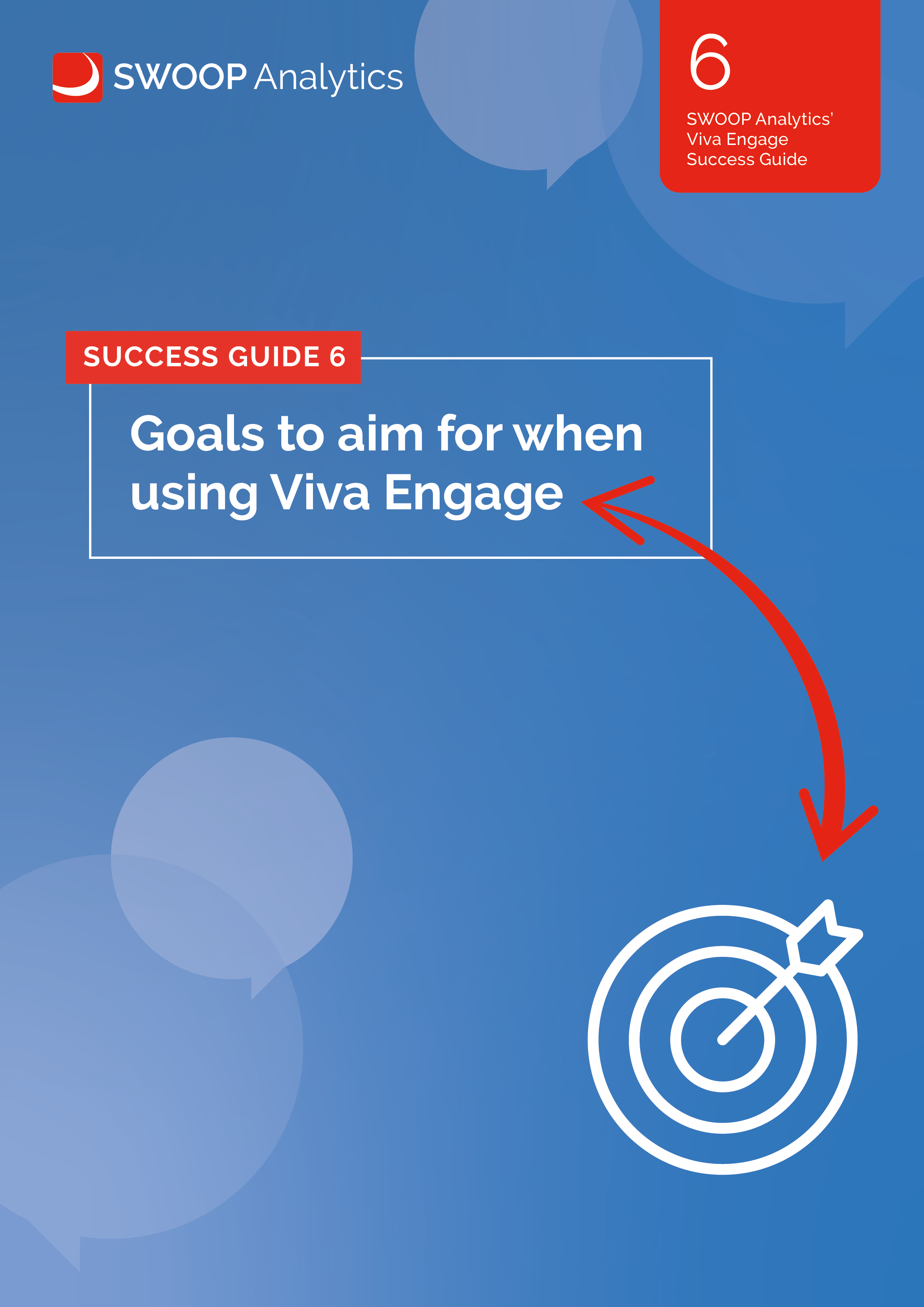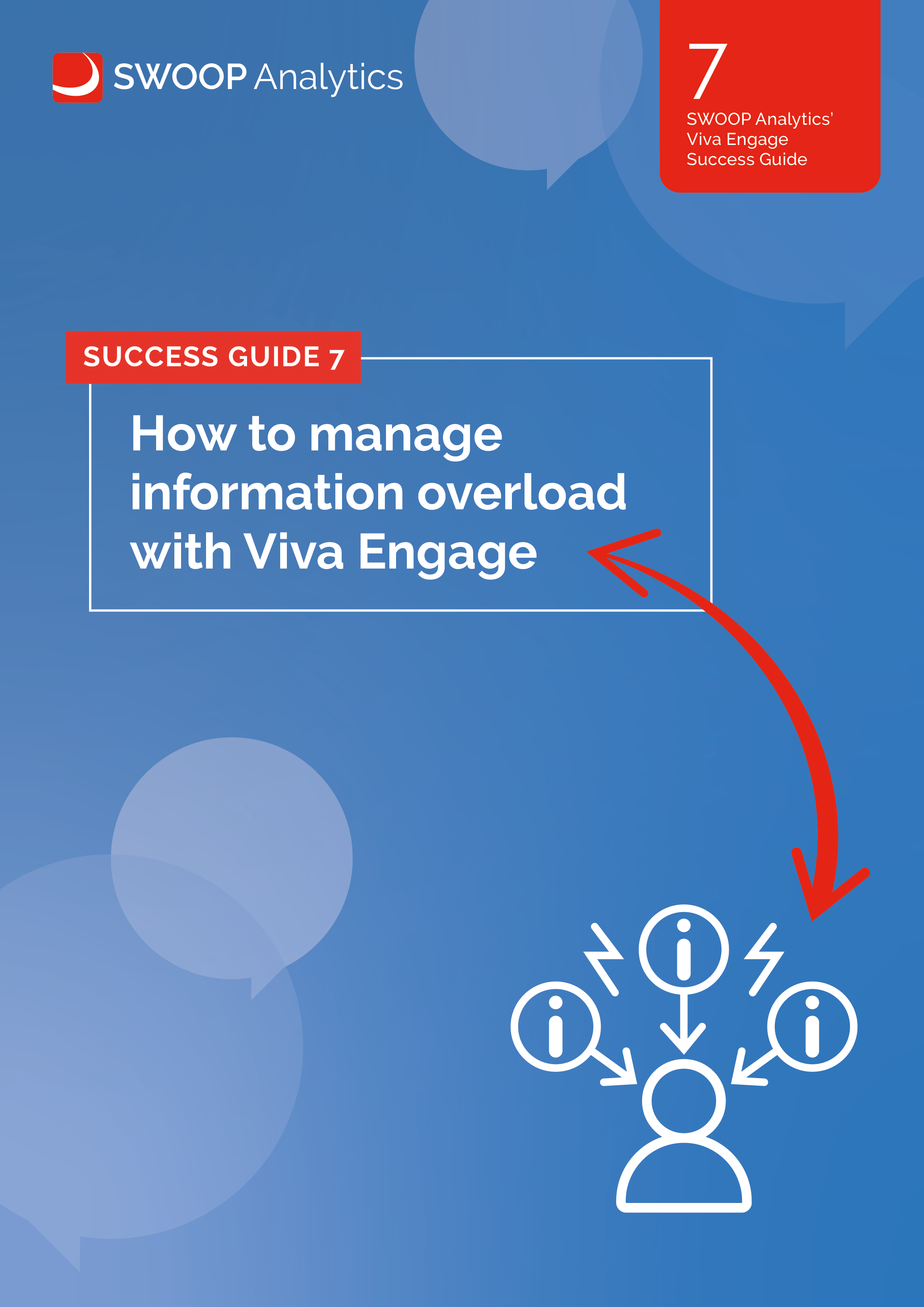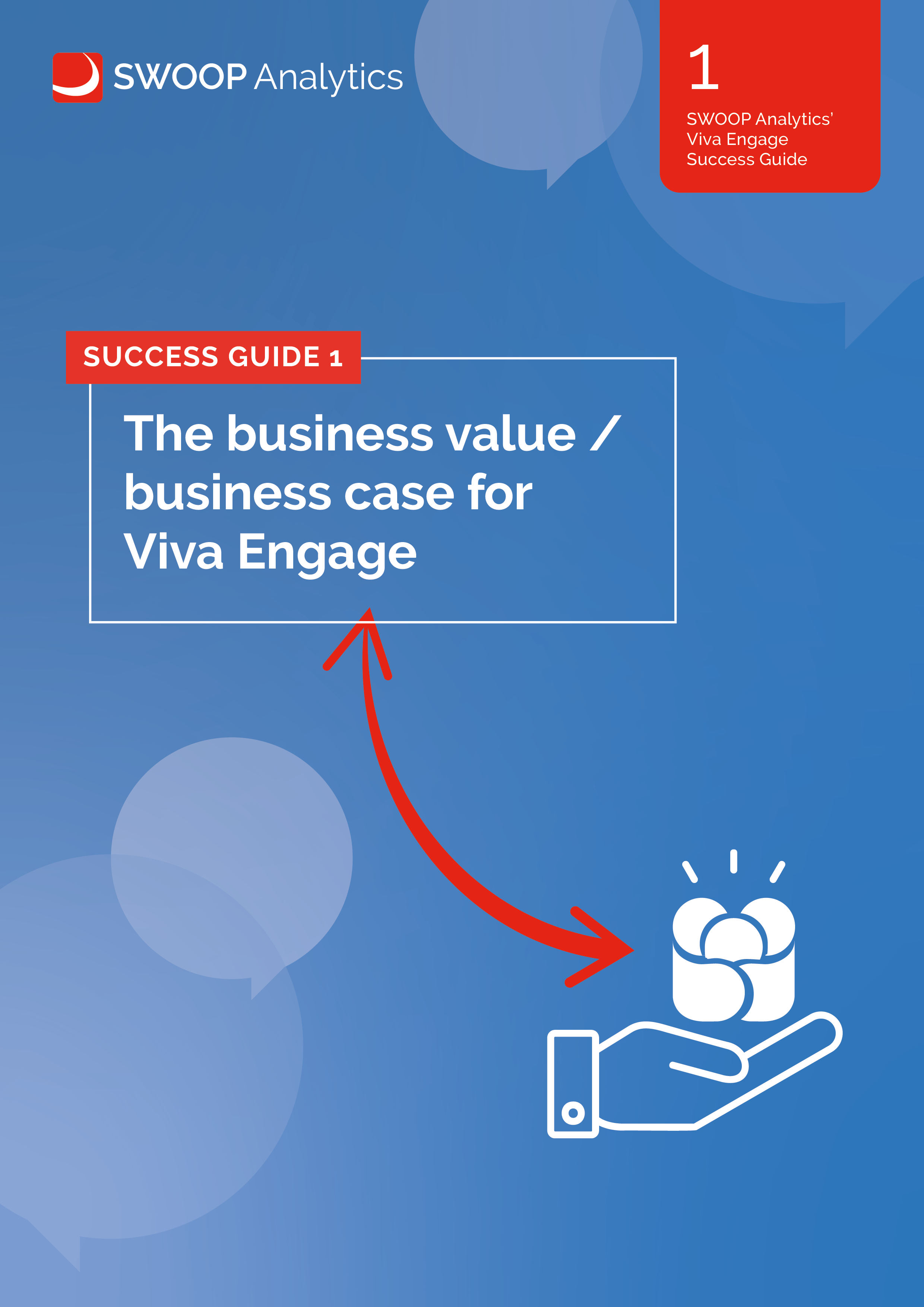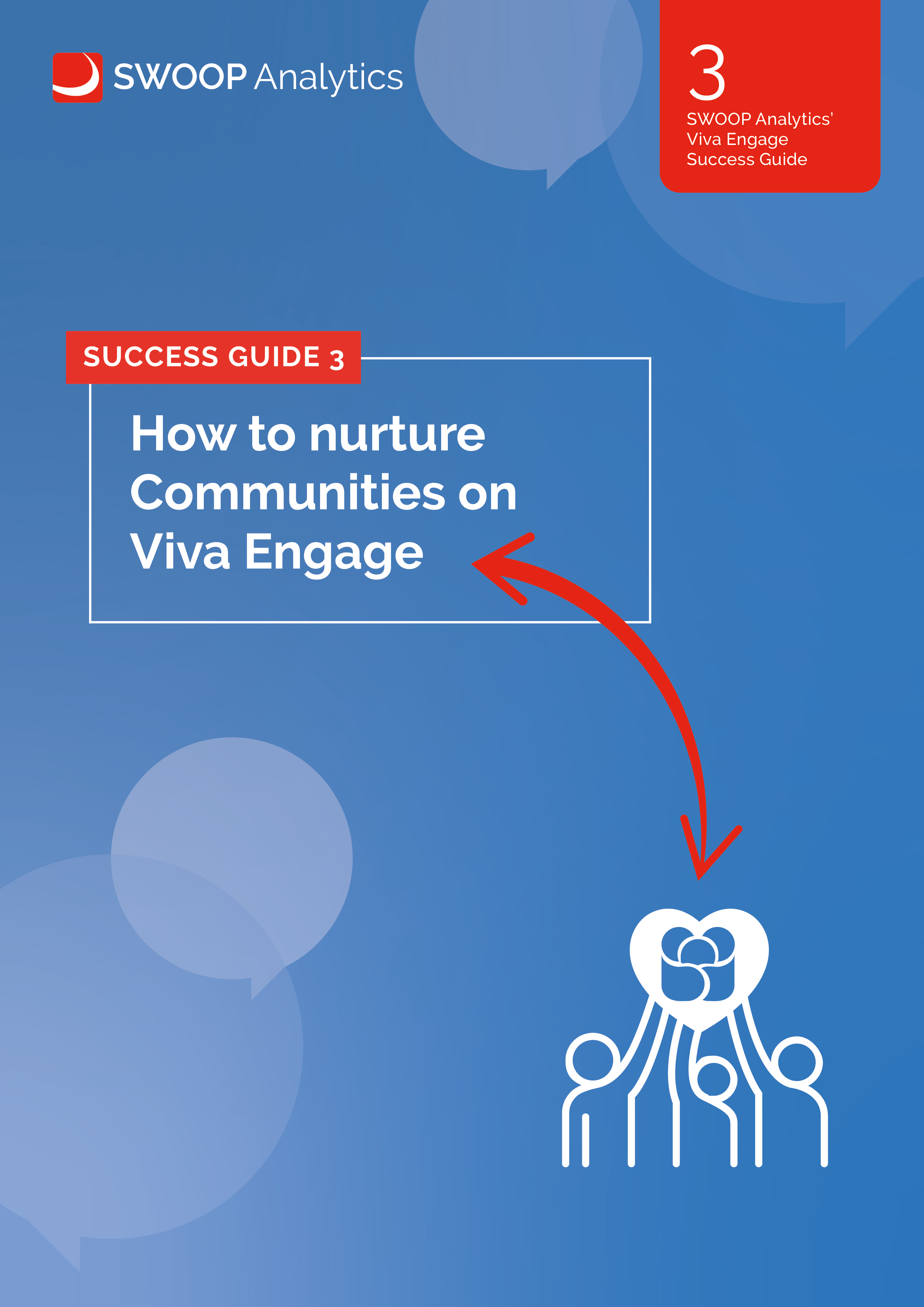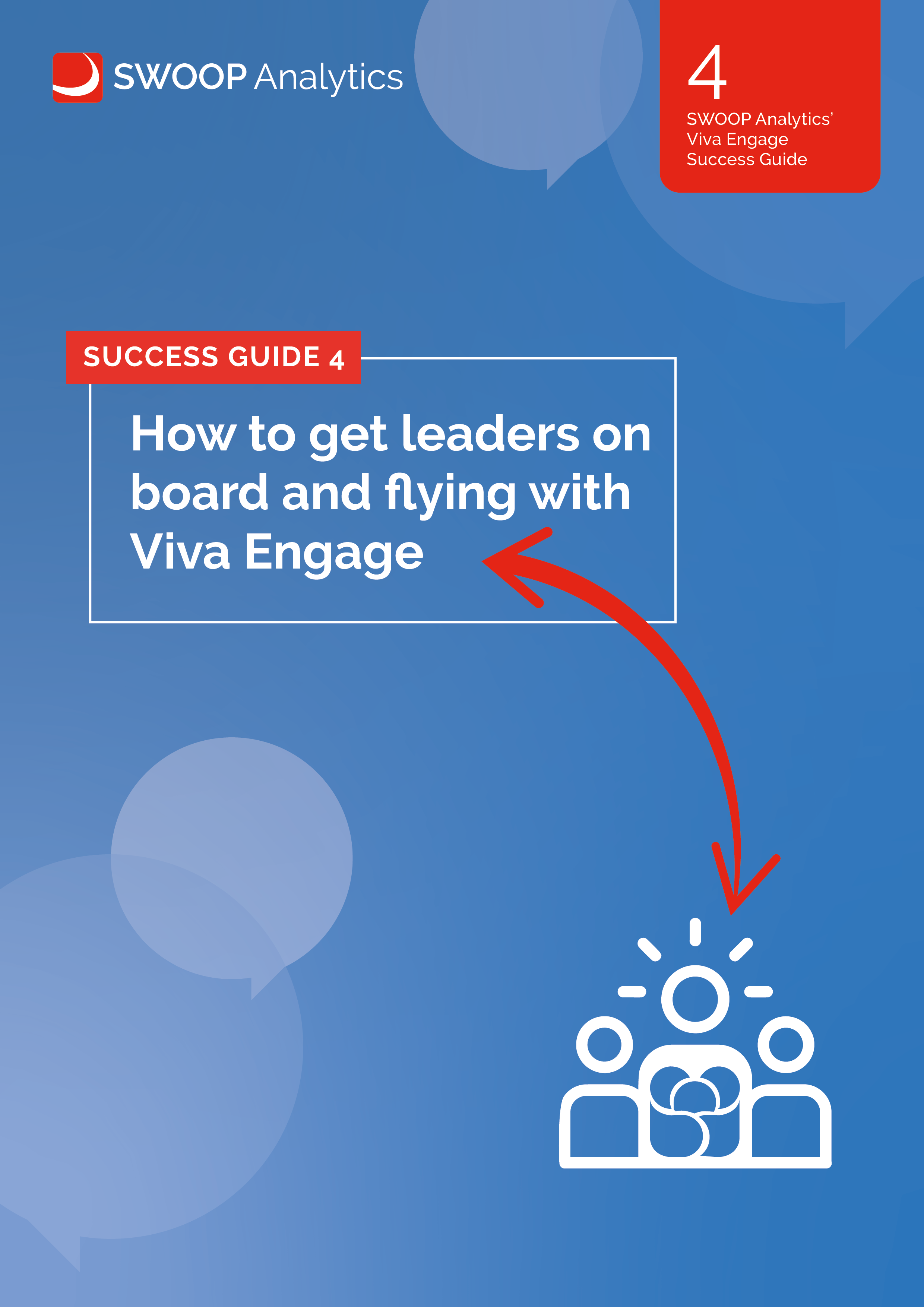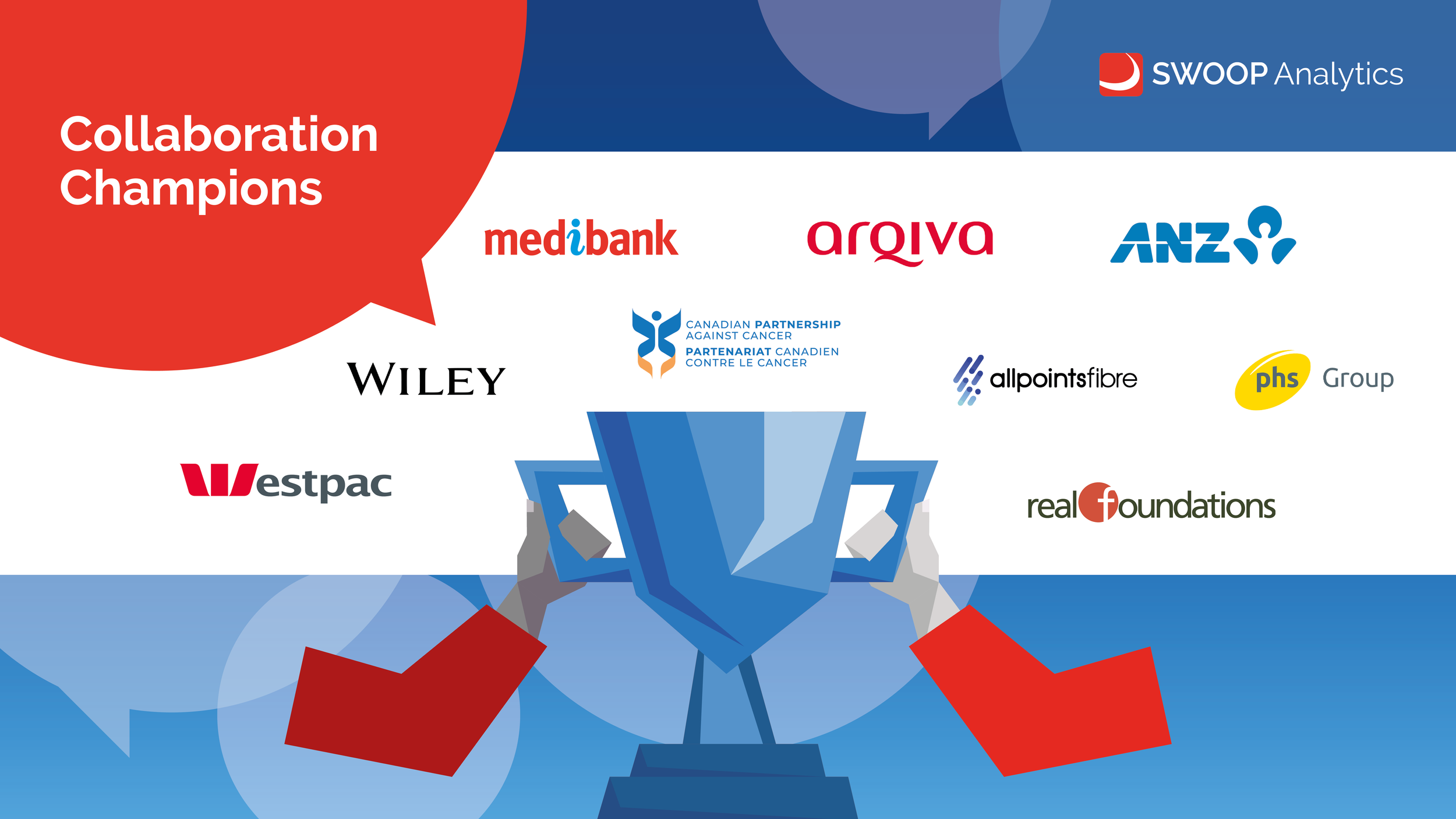SWOOP Analytics’ 2025/26
Viva Engage Benchmarking Report
Download your free copy of SWOOP Analytics’ 2025/26 Viva Engage Benchmarking Report –
How to get the most from Viva Engage.
We’ve analysed almost 17 million Viva Engage interactions, all of which have occurred in the same six-month period, from almost three million employees worldwide across 73 organisations and 5,758 Viva Engage communities to show you how employees, leaders and organisations are actually using Viva Engage, not how they think they are using it.
This is SWOOP Analytics’ 11th Viva Engage benchmarking report and is the world’s most comprehensive, long-term analysis of Viva Engage usage and behaviour patterns, based on real-time interactions.
In this report we'll show you the good, the bad and the ugly trends in Viva Engage usage over the past year.
Over the past six years, we’ve seen a shift in the way Viva Engage is used. During the COVID-19 pandemic, people were flocking to Viva Engage to connect and communicate with colleagues but in the five years since, we’ve seen an increase in Viva Engage being used as an official corporate communications channel.
New to this year’s report, we’ve addressed the issue of information and noise overload across Viva Engage and internal communications channels, along with a new app that is sure to be a game changer for anyone involved in internal comms.
Our benchmarking report will show you how to get the most from your Viva Engage network, we'll give you achievable goals to set your own benchmarks, and you'll learn best practices from the world's top Viva Engage users.
We’ve also updated all our Viva Engage Success Guides based on this latest research to give you data-based actions you can take to improve Viva Engage for all your users. These guides are an invaluable resource for anyone using, or launching, Viva Engage.
Download your 2025/26 Viva Engage Benchmarking Report and Success Guides
NEW Report:
NEW Success Guides:
UPDATED Success Guides:
We’ve also identified the world’s top performing Viva Engage networks, and the top performing communities, and been fortunate enough to interview many of these organisations so we can all learn from their best practices and experience.
SWOOP Analytics’ 2025/26 Viva Engage benchmarking study, based on six months of real-life data to July 1, 2025, shows a shift away from two-way conversations towards one-way, broadcasting-style communications.
We found more people are using Viva Engage, but they’re not tapping into its superpower and using it to engage in two-way conversations.
These trends highlight the need for renewed focus on fostering genuine, reciprocal interactions to maintain Viva Engage as a vibrant platform for enterprise communication and collaboration.
In SWOOP Analytics' 2025/26 Viva Engage benchmarking we analysed:
» Across 73 enterprises in the six months to July 1, 2025
» 5758 Viva Engage communities
» Almost 17 million Viva Engage interactions
» The Viva Engage behaviours from almost 3 million employees
Key Insights 2025/26
The good…
Viva Engage participation levels have increased, and more people are seeing the most popular posts, cementing Viva Engage as a key enterprise communications channel .
The percentage of people who have interacted with colleagues by posting, replying or reacting has increased to 31.6% in SWOOP Analytics’ 2025/26 Viva Engage benchmarking analysis, up from 28.7% the previous year. This shows almost a third of employees are actively using Viva Engage rather than passively reading.
More people are seeing the most popular posts, with the average reach of the top 10 Most Engaging Posts at 34.5% of all people that have access to Viva Engage, up from 29.5% in 2024/25.
More people are being @mentioned in posts, which stimulates conversation .
Tagging, or @mentioning, a colleague is to encourage their participation in a discussion. For the fifth year in a row, the number of @mentions has continued to rise, with an average of 15.3% of all posts @mentioning colleagues in our 2025/26 analysis.
SWOOP Analytics research shows you receive , on average, 2.1 times the number of replies when you @mention a person in a post.
Viva Engage is a potential innovation engine, with more people participating in different communities and asking more questions
SWOOP Analytics’ benchmarking analysis shows people are participating in more communities, with most people being active in between two to four communities. The average Multi-Group Participation score increased to 44.0 in 2025/26, up from 41.2 the previous year. This means more people are participating in different communities and sharing their knowledge across more communities. Cross-pollination of ideas is linked to innovation, as it allows individuals to bring diverse experiences and knowledge to bear.
In another positive shift, more Viva Engage posts and replies include questions. SWOOP Analytics research shows asking questions on Viva Engage leads to 150% more replies. On average, 12.6% of posts and replies included a question in SWOOP Analytics’ 2025/26 analysis, up from 11.8% the previous year.
The bad…
The number of replies per post on Viva Engage has dropped while reactions are up, indicating conversations are becoming shallower .
People are replying to Viva Engage posts less. On average, 45% of posts received a reply in SWOOP Analytics’ 2025/26 analysis, down from 49% the previous year. However, the percentage of posts receiving a reaction (but no reply) jumped to 86%, up from 84% in 2024/25. Fewer replies and more reactions suggests the depth of conversations is slowly decreasing on Viva Engage.
More people are participating on Viva Engage but contribute less, potentially leading to less robust conversations.
People using Viva Engage made, on average, 21.5 activities over the six-month period analysed. This included posts/shares, comments/replies or reactions. This is a drop from 25.6 activities in 2024/25 and is well below the peak activity levels of more than 30 per user during the COVID-19 pandemic period. If people are contributing less to conversations, there is a risk those conversations are missing vital knowledge and diversity of ideas.
More Broadcaster and fewer Engager personas indicate a rise in one-way relationships and a shift in the use of Viva Engage towards a broadcasting corporate communication channel .
SWOOP Analytics’ benchmarking analysis found a slight increase in the Broadcaster persona in our 2025/26 analysis. Broadcasters are people who post, but rarely receive a response. It is one-way communication, like traditional broadcast corporate communications.
There was also a drop in the aspirational Engager persona. These are people who balance between how much they post/reply/react, and how much they receive in return. The average percentage of Engagers across organisations is now 13%, down from 15.3% in 2024/25.
The rise in the number of Broadcasters and the drop in the number of Engagers suggest there is an increase in one-way conversations on Viva Engage, hence it is being used more for broadcasting than in previous years.
And the ugly…
Fewer conversations are occurring on Viva Engage, which means there’s a risk of declining employee engagement and knowledge sharing .
SWOOP Analytics’ benchmarking analysis found people made, on average, less than one post every six months (the average was 0.91 posts* over the 2025/26 benchmarking period). Alarmingly, this number has dropped from almost two posts per person in the same period in our 2024/25 analysis.
This finding shows people are initiating fewer conversations, which leads to fewer opportunities to engage employees to collaborate and share knowledge across the organisation.
Two-way relationships on Viva Engage are down, a sign of a drop in trust across organisations and worsening social cohesion.
SWOOP Analytics’ Two-way Relationships score is the most reliable measure of trustful relationships forming and problems being solved across Viva Engage. Sadly, this measure continued to fall in 2025/26, down to 17.4% from 19.5% in 2024/25.
A high average score in this measure suggests that community members are engaging positively with one another, which fosters trust and promotes a sense of belonging. Conversely, a low score indicates poor social cohesion, suggesting there is much work to be done to enhance interaction and collaboration among members.
Join SWOOP’s 2026/27
Viva Engage benchmarking study
Join next year’s Viva Engage benchmarking to see exactly how your Viva Engage network compares with the rest of the world.
SWOOP Analytics benchmarking is free and your data remains anonymous.
To join our benchmarking study, you will be connected to SWOOP Analytics for Viva Engage for free for a period of time. You will have full access to our analytics, including the ability to create your own custom enterprise benchmarking report. Our AI-powered Dr SWOOP will provide a full commentary on your results, comparing your Viva Engage network against 15 different metrics to show how you scored against the average, and the best, performing organisations. Dr SWOOP will also provide a qualitative summary of your organisation’s strengths and areas for improvement.


